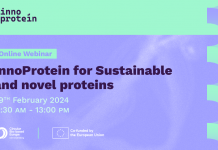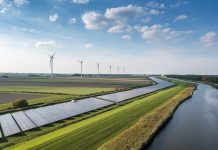Michael Slimak Ph.D., retired National Program Director for the Sustainable & Healthy Communities Research Program at the U.S. Environmental Protection Agency (EPA), explores the most pressing challenges today that reflect the need to understand interdependencies between the natural and social sciences
“All ethics so far evolved rest upon a single premise: that the individual is a member of a community of interdependent parts,” stated Aldo Leopold, in his seminal work A Sand County Almanac.
We live in communities of varying sizes and degrees of cohesiveness, and our health and well‐being are inextricably linked to the services provided by ecosystems. It is therefore urgent to understand community sustainability which requires the integration of the natural and social sciences. To advance environmental sustainability, environmental and public health scientists and decision‐makers need to address new and complex environmental challenges that impact human well‐being and ecosystem integrity. Energy demands have increased, and land-use patterns are evolving which can impact air, land, and water quality, and consequently, human health. Agriculture and manufacturing are also changing as technology advances. With these changes, the focus of environmental protection has expanded beyond local effects to increasingly recognise the global impacts of human activity on ecological and human health.
The COVID-19 pandemic abruptly brought to our attention the interdependence of our ecosystems and human health, amplifying the complex environmental issues of the 21st century. These contemporary issues exist at various spatial scales that unfold over long temporal scales and have possible global implications. They are difficult to define, unstable, and socially complex, with no clear single solution or end point, and extend beyond the understanding of one discipline or the responsibility of one organisation. Because of the complex interdependencies, efforts to solve one aspect of a problem may reveal or create other problems. Below are perhaps the most pressing complex challenges that reflect the need to understand interdependencies between the natural and social sciences.
Climate change
An increasing range of global adverse effects from climate change are affecting air quality, water resources, agriculture, and wildlife habitats, as well as basic infrastructure systems. Climate change is altering the distribution and intensity of public health–related stressors (e.g., temperature, vector‐borne diseases) and is eroding gains made in controlling air pollution in many urban areas. The impacts of climate change are likely to be widespread and significant. Without continued emission reductions, the public health and welfare of current and future generations are in jeopardy and vulnerable citizens, like children, older adults, and people living in poverty, are most at risk.
Energy
Choices about future energy sources have far‐reaching economic, social, environmental, and public health effects. Energy provides essential support for society but also impacts environmental quality. Historically, fossil fuel‐based energy production and use have affected air quality and the climate, creating emissions of conventional air pollutants and greenhouse gases and the process of producing energy can potentially lead to water contamination. Because energy is central to a strong economy, the quest for cleaner energy sources has driven new technologies to convert sunlight, wind, or geothermal energy into electricity. Likewise, federal regulations related to energy—along with social dimensions such as consumer preference for clean energy—are driving the changing energy landscape.
Land use
The health and well‐being of a community is tightly coupled with land use and development. Land use decisions about roads and transportation systems, industrial siting and development, agricultural land use and the provision of community access to healthy and sustainable food, housing, and open space for parks and recreation can all impact human health. The distribution of green space in populated areas is a factor in physical activity, stress, and related physical and mental health issues. Land use decisions can drive cascading events that may adversely impact ecological and human health.
Water quantity and quality
About 400 billion gallons of water are used each day in the United States, and we face many challenges in maintaining the safety and sustainability of these water resources. The recent water crisis in Flint, Michigan, where lead (Pb) leached from pipes in older drinking water systems, highlights the importance of proper treatment of source water to prevent such occurrences. Harmful algal blooms (HAB) are influenced by anthropogenic forces and climate change. Drought is a concern for many communities, and the effects of climate change are expected to increase the frequency, intensity, and duration of droughts in many regions.
Ecosystem integrity and pandemics
The underlying causes of pandemics are the same global environmental changes that drive biodiversity loss and climate change. Unsustainable exploitation of the environment due to land‐use change, agricultural expansion and intensification, wildlife trade and consumption, and other drivers, disrupts the ecology of wildlife and their microbial systems, allowing animal microbes and viruses to move into people and lead to infections, including pandemics. Biodiversity loss itself can lead to increased pandemic risk when the species that adapt well to human‐dominated landscapes are able to harbour high rates of spill over‐risk pathogens. Pathogens of wildlife, livestock and people can also directly threaten biodiversity and emerge from the same activities that drive disease risk in people.
Complex environmental challenges have historically been managed with compartmentalised and pollutant specific, risk‐based approaches.
Although such approaches were successful in addressing part of the problem, they are not well‐suited to solve today’s complex environmental challenges. Rather, today’s problems call for a systems approach that looks at the issue holistically, includes all the drivers and stressors that affect it and the dimensions that frame it, and integrates information from human health and the ecological and social sciences to formulate sustainable solutions to environmental issues. Yet, the current trend of misinformation and baseless claims (e.g., climate change deniers, lack of evidence‐based thinking) coupled with the explosion of social media, potentially hinders taking a systems approach. Progress in environmental protection can only be made when the public understands the challenges and trusts governments to employ efficacious strategies. The current erosion of public confidence in science and government, promoted by some elected officials, is a critically important challenge that must be addressed if we are to make progress in sustaining our health and well‐being which is inextricably linked to environmental quality.



























